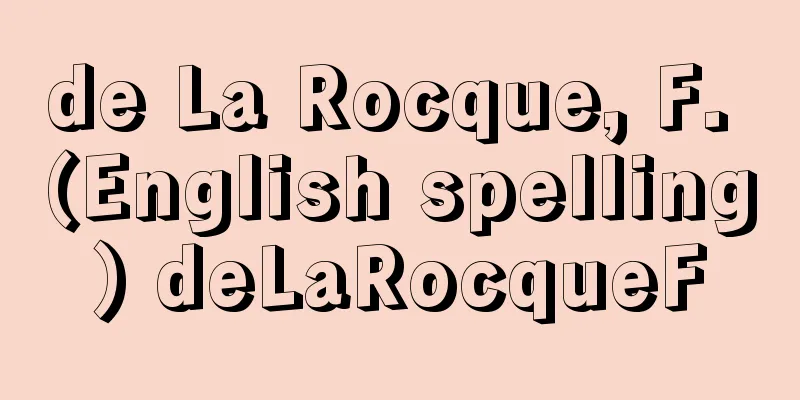Genpei Nunobiki Falls

|
Joruri Gidayubushi. Historical piece. Five acts. Written by Namiki Senryu and Miyoshi Shoraku. First performed at the Takemotoza Theater in Osaka in November 1749 (Kan'en 2). Based on the Genpei Seisuiki and other sources, this dramatization follows the downfall of Minamoto no Yoshitomo, his younger brother Kiso Senjo Yoshikata's surviving son Komaomaru, who grows up to become Kiso Yoshinaka, and rises again with the help of Tada Yukitsuna. The title comes from the story (first act) in which a divine oracle about the downfall of the Heike appears at Nunobiki Falls in Setsu (Hyogo Prefecture). The second act (Yoshikata's final days) depicts Yoshikata, surrounded by Kiyomori's pursuers, entrusting his affairs to Yakko Orihei (actually Tada Yukitsuna) and entrusting the Genji's white flag to his wife Koman before committing suicide. The third act depicts Koman swimming across Lake Biwa when she is spotted by a Taira boat. Saito Sanemori, who had ties to the Genji, cuts off Koman's arm along with the flag, in the "Lake Gozabune" incident, followed by the famous "Kurosuke Residence." When Yoshikata's wife Aoi Gozen, who is pregnant, is hidden by Koman's foster father, the peasant Kurosuke, Sanemori and his enemy Seno Juro come to investigate, but Sanemori uses his wit to let the baby Kuomaromaru go at birth, and when Seno finds out that the dead Koman is his own child, he deliberately has himself killed by his grandson Tarokichi. The story is also known as "Sanemori Monogatari" because of the clear dialogue and beautiful movements that depict the circumstances surrounding Sanemori's execution of Koman, and is a popular kabuki play. In the fourth act, there is a piece called "Matsunami Biwa," in which Yukitsuna plays the biwa priest Matsunami Kengyo and targets the Taira clan, while his daughter Kozakura endures being subjected to harsh criticism while playing the biwa. [Toshiaki Matsui] Source: Shogakukan Encyclopedia Nipponica About Encyclopedia Nipponica Information | Legend |
|
浄瑠璃義太夫節(じょうるりぎだゆうぶし)。時代物。5段。並木千柳(せんりゅう)、三好松洛(しょうらく)作。1749年(寛延2)11月、大坂・竹本座初演。『源平盛衰記』などに取材して、源義朝(よしとも)の滅亡後、その弟木曽先生義賢(きそのせんじょうよしかた)の遺児駒王丸(こまおうまる)が成人して木曽義仲(よしなか)となり、多田行綱(ただゆきつな)の加勢によって再挙するまでを脚色。題名は、摂州(兵庫県)布引滝に平家滅亡の神託が現れる話(初段)に由来する。二段目(義賢最期)は、清盛の追っ手に囲まれた義賢が、奴折平(やっこおりへい)実は多田行綱に後事を託し、その女房小万(こまん)に源氏の白旗を預けて自刃するまで。三段目は小万が琵琶(びわ)湖を泳いで渡る途中、平家の船にみつけられるが、源氏にゆかりの斎藤実盛(さねもり)が小万の腕を旗ぐるみ切り落とす「湖上御座船(ござぶね)」のあと、有名な「九郎助(くろすけ)住家」になる。義賢の妻葵(あおい)御前が懐妊の身を小万の養父百姓九郎助にかくまわれていると、実盛と敵役(かたきやく)の瀬尾(せのお)十郎が詮議(せんぎ)にくるが、実盛は誕生の駒王丸を機知によって見逃してやり、死んだ小万を実のわが子と知った瀬尾は、わざと孫の太郎吉に討たれる。捌(さば)き役の実盛が小万を切った事情を、朗々たる台詞(せりふ)回しと美しい型にのせて表現するところが眼目なので「実盛物語」ともよばれ、歌舞伎(かぶき)でも人気のある演目。なお四段目には、行綱が琵琶法師松波検校(まつなみけんぎょう)となって平家をねらい、娘小桜(こざくら)が責められるのを耐えつつ琵琶を弾ずる「松波琵琶」がある。 [松井俊諭] 出典 小学館 日本大百科全書(ニッポニカ)日本大百科全書(ニッポニカ)について 情報 | 凡例 |
<<: Kenpeki Seiya (English spelling)
Recommend
Lady Washington geranium
...In horticulture, the term pelargonium refers t...
troy ounce
...The unit of measurement is the dram (= 1/16 oz...
Anderson, DD
...A site on a river terrace in the middle reache...
Bedding stratification
The layered arrangement of rocks found in sedimen...
Potentilla discolor (English spelling)
…[Naruhashi Naohiro]. . … *Some of the terminolog...
Wolfenbüttel - Wolfenbüttel
...In the 13th century, the residents of the merc...
Corona discharge - Corona discharge
A type of gas discharge. It is a partial discharg...
War Criminal - Senpan
〘Noun〙 Abbreviation of "Sensou hanzai (war cr...
Uchigami
On the stone slab Mallet Hammer Paper that has bee...
Zephyros
…She was the daughter of the Titan Hyperion, and ...
Eastern Morality and Western Art
An idea advocated by the late Edo thinker Sakuma S...
Ghazna (English spelling)
A city in eastern Afghanistan. Currently called Gh...
Melt spinning
A type of spinning method for chemical fibers. The...
Accommodation - Shuku
[1] 〘 noun 〙① lodging place; inn; inn. [Nippo Jish...
Hāla - Hāra (English spelling)
Date of birth and death unknown. An ancient India...









